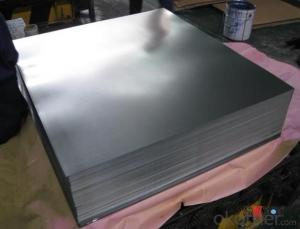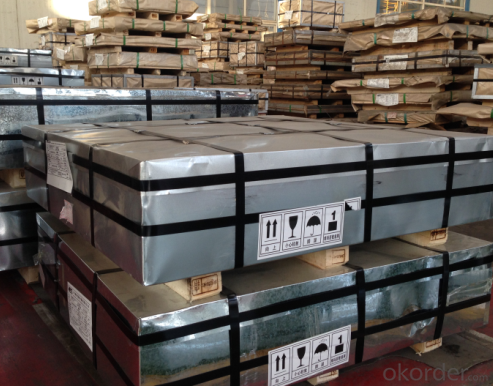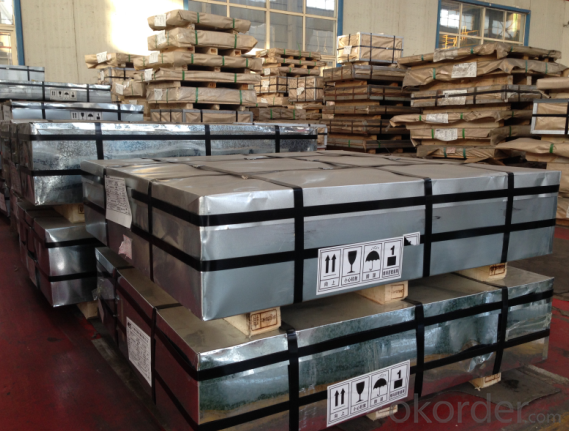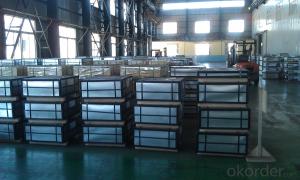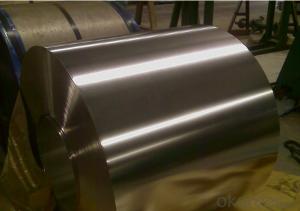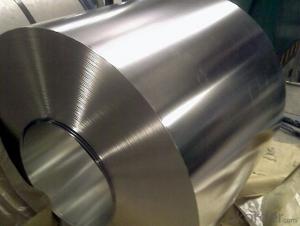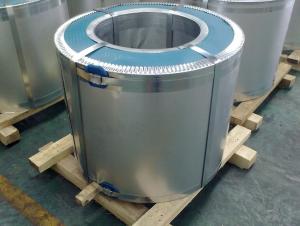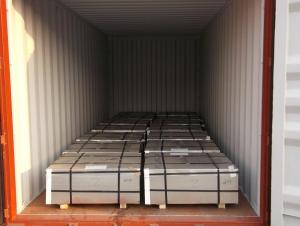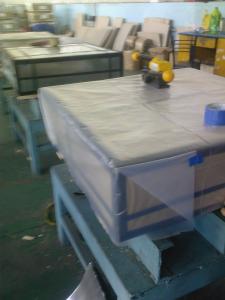Tinplate (ETP) Coil and Sheets for Foods and Chemical Packaging
- Loading Port:
- Tianjin
- Payment Terms:
- TT OR LC
- Min Order Qty:
- 25 m.t.
- Supply Capability:
- 7000 m.t./month
OKorder Service Pledge
OKorder Financial Service
You Might Also Like
1.Structure of Tinplate (ETP) Coil and Sheets for Foods Packaging Description
Electrolytic Tin Plate Coils and Sheets for Foods Metal Packaging, is one thin steel sheet with a coating of tin applied by electrolytic deposition. Tinplate made by this process is essentially a sandwich in which the central core is strip steel. This core is cleaned in a pickling solution and then fed through tanks containing electrolyte, where tin is deposited on both sides. As the strip passes between high-frequency electric induction coils, it is heated so that the tin coating melts and flows to form a lustrous coat.
2.Main Features of the Tinplate (ETP) Coil and Sheets for Foods Packaging
Appearance – Electrolytic Tin Plate is characterized by its beautiful metallic luster. Products with various kinds of surface roughness are produced by selecting the surface finish of the substrate steel sheet.
Paintability and printability – Electrolytic Tin Plates have excellent paintability and printability. Printing is beautifully finished using various lacquers and inks.
Formability and strength – Electrolytic Tin Plates have got very good formability and strength. By selecting a proper temper grade, appropriate formability is obtained for different applications as well as the required strength after forming.
Corrosion resistance – Tinplate has got good corrosion resistance. By selecting a proper coating weight, appropriate corrosion resistance is obtained against container contents. Coated items should meet 24 hour 5 % salt spray requirement.
Solderability and weldability – Electrolytic Tin Plates can be joined both by soldering or welding. These properties of tinplate are used for making various types of cans.
Hygienic – Tin coating provides good and non toxic barrier properties to protect food products from impurities, bacteria, moisture, light and odours.
Safe – Tinplate being low weight and high strength makes food cans easy to ship and transport.
Eco friendly – Tinplate offers 100 % recyclability.
Tin is not good for low temperature applications since it changes structure and loses adhesion when exposed to temperatures below – 40 deg C.
3.Tinplate (ETP) Coil and Sheets for Foods Packaging Images

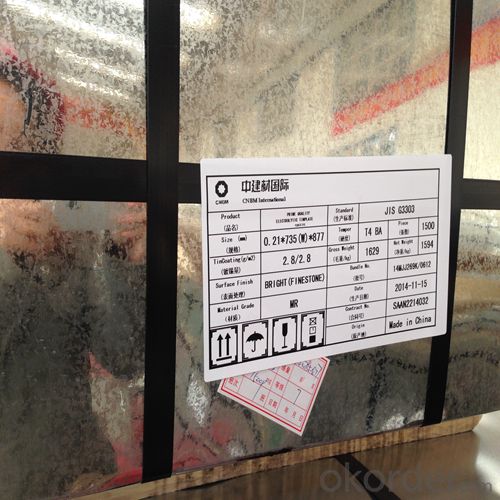
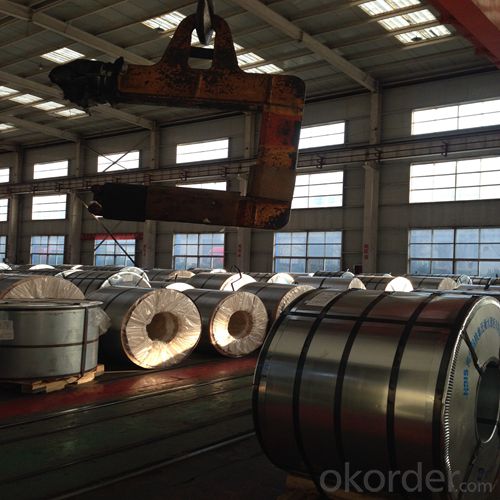

4.Tinplate (ETP) Coil and Sheets for Foods Packaging Specification
Standard | ISO 11949 -1995, GB/T2520-2000,JIS G3303,ASTM A623, BS EN 10202
|
Material | MR,SPCC |
Thickness | 0.15mm - 0.50mm |
Width | 600mm -1150mm |
Temper | T1-T5 |
Annealing | BA & CA |
Coil Inner Diameter | 508mm |
Weight | 6-10 tons/coil 1~1.7 tons/sheets bundle |
Passivation | 311 |
Oil | DOS |
Surface | Finish,bright,stone,matte,silver |
5.FAQ of Tinplate (ETP) Coil and Sheets for Foods Packaging
- How are the Electrolytic Tin Plates specified?
The Electrolytic Tin Plates are specified as per the steel base, extent of tempering, the coating weight, annealing method and the surface finish.
- How many types there are for base steels?
The base steels are of three types: Type MR, L, D
- How many types there are for base steels?
The base steels are of three types: Type MR, L, D
-What your tinplate material is used for ?
Tinplate is widely used for the packaging of products. Such as food cans,
beverage cans, pet cans, closures, general line cans and so on.
- Q: How can recycled tin cans be recycled?
- The broken material is separated by the air whirling sorting system, and the metal and nonmetal are separated from each other. Moreover, the whole system is equipped with a dust removing device to minimize the damage caused by dust pollution in the process of production.Tin tins, crushing machines, equipment and maintenance costs are low: equipment design is reasonable, well made, extending the service life of equipment, reducing the use and maintenance costs of equipment.
- Q: Can tinplate be used for packaging of hazardous materials?
- Yes, tinplate can be used for packaging of hazardous materials. Tinplate is known for its high corrosion resistance, durability, and ability to withstand extreme temperatures. These properties make it suitable for packaging materials that may pose a risk to human health or the environment. Additionally, tinplate can be coated or lined with appropriate materials to provide an extra layer of protection and prevent any leakage or interaction between the hazardous material and the packaging.
- Q: What are the main applications of tinplate in the marine industry?
- Tinplate is commonly used in the marine industry for various applications such as manufacturing of cans for food and beverages, corrosion-resistant coatings for ship components, and protective packaging for marine equipment and supplies. Additionally, tinplate is also used for decorative purposes, such as in the production of marine-themed items and accessories.
- Q: How does tinplate compare to glass in terms of packaging applications?
- Tinplate and glass have distinct advantages and disadvantages for packaging applications. Tinplate offers superior durability, resistance to corrosion, and can be easily formed into various shapes and sizes, making it suitable for canned food, beverages, and aerosol packaging. On the other hand, glass provides an elegant appearance, is chemically inert, and preserves the taste and quality of its contents. However, glass is fragile, heavier, and more expensive to produce and transport than tinplate. Therefore, the choice between tinplate and glass for packaging applications depends on factors such as product compatibility, cost, and customer preferences.
- Q: Can tinplate be used for furniture?
- Yes, tinplate can be used for certain types of furniture, particularly for creating decorative elements or accents. However, it is not commonly used as the primary material for furniture due to its relatively low strength and durability compared to other metals like steel or aluminum.
- Q: Is tinplate suitable for hot or cold food products?
- Tinplate is suitable for both hot and cold food products.
- Q: How to open cans
- A tin can be opened, the handle is separated, and the canned fruit can be clamped by the head, and the rotating knob and the tin can be opened. Remember, when you turn the knob, you can only rotate clockwise and turn counterclockwise clockwise.
- Q: What are the main factors influencing the pricing of tinplate?
- The main factors influencing the pricing of tinplate include the cost of raw materials such as tin and steel, supply and demand dynamics in the market, production and transportation costs, global economic conditions and trade policies, technological advancements in the tinplate industry, and fluctuations in currency exchange rates. Additionally, any regulations or tariffs imposed on tinplate imports or exports can also impact its pricing.
- Q: Can tinplate be used for signage and displays?
- Yes, tinplate can be used for signage and displays. Tinplate is a versatile material that offers excellent durability and can be easily shaped and printed on, making it ideal for creating eye-catching signage and displays.
- Q: How does tinplate contribute to the safety of toys?
- Tinplate contributes to the safety of toys by providing a durable and non-toxic material that is resistant to corrosion and can withstand rough handling. It helps prevent sharp edges and ensures that toys do not break easily, reducing the risk of injuries during play. Additionally, tinplate is often used in the packaging of toys, offering a protective barrier that prevents contamination and prolongs the shelf life of the product.
Send your message to us
Tinplate (ETP) Coil and Sheets for Foods and Chemical Packaging
- Loading Port:
- Tianjin
- Payment Terms:
- TT OR LC
- Min Order Qty:
- 25 m.t.
- Supply Capability:
- 7000 m.t./month
OKorder Service Pledge
OKorder Financial Service
Similar products
Hot products
Hot Searches
Related keywords
